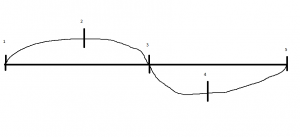3. The Antidigital Lie:
You have heard this one often, in one
form or another. To wit: Digital sound
is vastly inferior to analog. Digitized
audio is a like a crude newspaper photograph
made up of dots. The
Nyquist-Shannon sampling theorem is
all wet. The 44.1 kHz sampling rate of
the compact disc cannot resolve the
highest audio frequencies where there
are only two or three sampling points.
Digital sound, even in the best cases, is
hard and edgy. And so on and so
forthall of it, without exception, ignorant
drivel or deliberate misrepresentation.
Once again, the lie has little
bearing on the mainstream, where the
digital technology has gained complete
acceptance; but in the byways and tributaries
of the audio world, in unregenerate
high-end audio salons and the
listening rooms of various tweako
mandarins, it remains the party line.
The most ludicrous manifestation of
the antidigital fallacy is the preference
for the obsolete LP over the CD. Not
the analog master tape over the digital
master tape, which remains a semirespectable
controversy, but the clicks,
crackles and pops of the vinyl over the
digital data pits background silence,
which is a perverse rejection of reality.
Here are the scientific facts any
second-year E.E. student can verify for
you: Digital audio is bulletproof in a
way analog audio never was and never
can be. The 0s and 1s are inherently
incapable of being distorted in the
signal path, unlike an analog waveform.
Even a sampling rate of 44.1
kHz, the lowest used in todays high-fidelity
applications, more than adequately
resolves all audio frequencies.
It will not cause any loss of information
in the audio rangenot an iota,
not a scintilla. The how can two sampling
points resolve 20 kHz? argument
is an untutored misinterpretation
of the Nyquist-Shannon sampling theorem.
(Doubters are advised to take an
elementary course in digital systems.)
The reason why certain analog
recordings sound better than certain
digital recordings is that the engineers
did a better job with microphone
placement, levels, balance, and equalization,
or that the recording venue
was acoustically superior. Some early
digital recordings were indeed hard
and edgy, not because they were digital
but because the engineers were still
thinking analog, compensating for anticipated
losses that did not exist.
Todays best digital recordings are the
best recordings ever made. To be fair, it
must be admitted that a state-of the-art
analog recording and a state-of-the-art
digital recording, at this stage of their
respective technologies, will probably
be of comparable quality. Even so, the
number of Tree-Worshiping Analog
Druids is rapidly dwindling in the professional
recording world. The digital
way is simply the better way.





